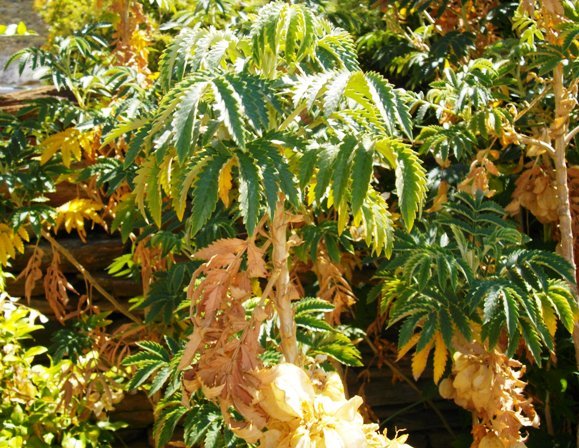Melianthus comosus

Author: Ivan Lätti
Photographer: Thabo Maphisa
Melianthus comosus is a strong growing, branched shrub with attractive leaves and flowers. The leaves are large and leathery, pinnately divided, grey-green with serrated edges, folded and curved along the main axis. When they are touched or bruised they exude a strong, unpleasant odour. This gave the plant its common name in Afrikaans of kruidjie-roer-my-nie (little-herb-do-not-stir-me or touch-me-not herb), promising that if you do I’ll stink!
The flowers are presented in spring on short drooping racemes of red flowers with some black markings on the inside. They are about 2,5 cm across and tend to turn brick-red or brown later. Attracting birds, bees and butterflies by producing much nectar ensures pollination. The fruits are attractive greenish-white, four-winged, bladder-like capsule.
The plant grows in rocky areas and loamy soil in riverine scrub in much of the southern and central parts of South Africa, in all provinces except KwaZulu-Natal and Limpopo. The species is not considered to be threatened in its habitat early in the twenty first century.
All six species of Melianthus are indigenous to South Africa.
Injuries and sores, also ringworm and rheumatism are treated in traditional medicine by making leaf poultices from plant parts. Dried leaves are also used. The medicinal value of the plant is shared with other members of the genus, particularly M. pectinatus, M. major and M. elongatus (Van Wyk and Gericke, 2000; www.plantzafrica.com; http://redlist.sanbi.org).

